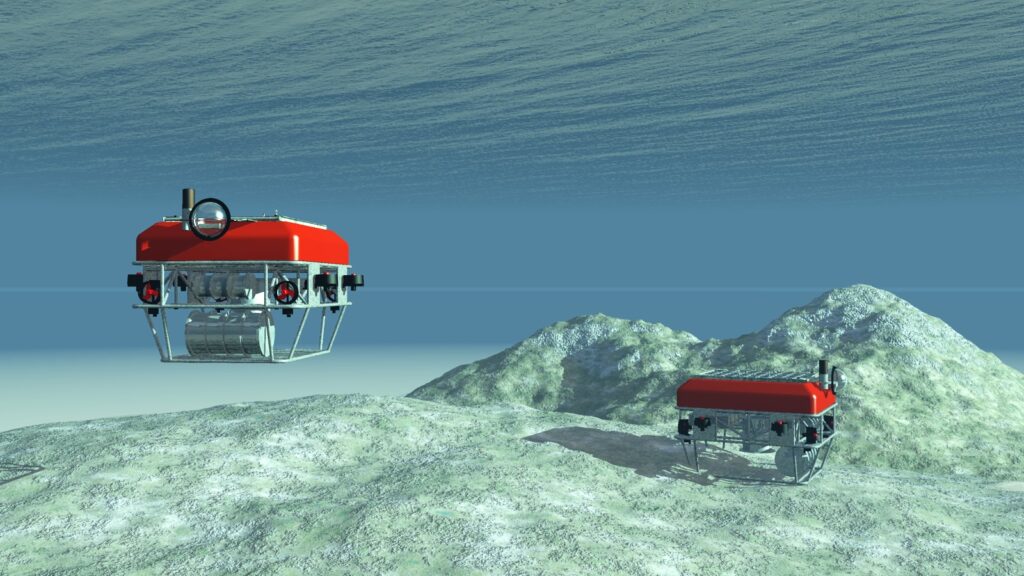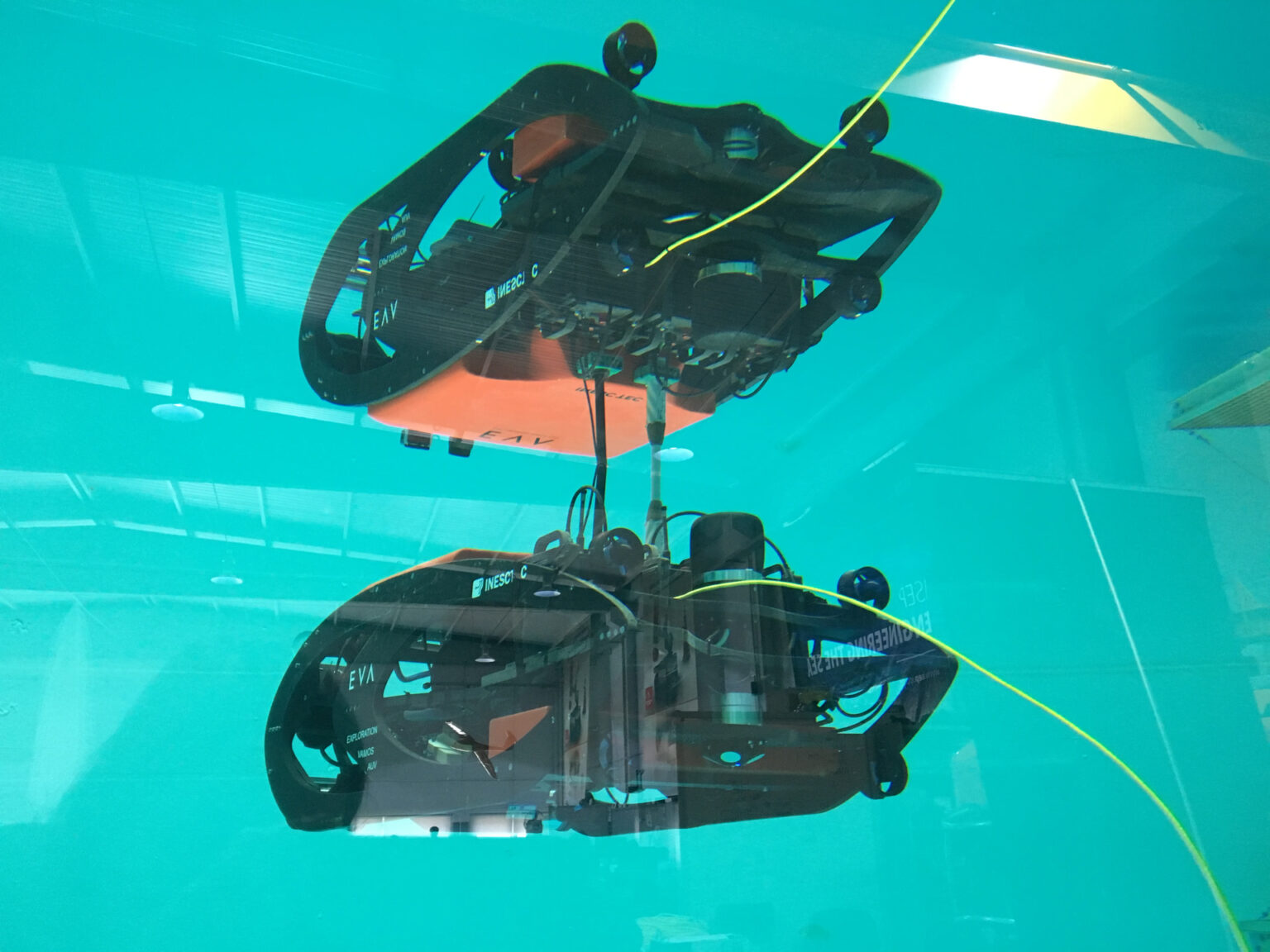Engineering autonomy for a safer, smarter ocean
Marine Robotics is one of INESCTEC.OCEAN’s core areas of expertise. With over 30 years of experience and the largest marine robotics group in Portugal, we develop advanced robotic platforms designed to operate autonomously in extreme marine environments.
Our goal is to expand what is possible at sea — enabling deeper, longer, and safer missions through innovation in autonomous systems and digital integration.
Our Approach
We adopt a “go deeper, stay longer, do more” philosophy. This means designing robotic systems that are highly autonomous, resilient under pressure, and capable of extended operations with minimal human intervention. Our research includes both the development of hardware and the design of intelligent systems for mission planning, monitoring, and control.
The Atlantic Ocean serves as our living lab—an ideal setting to test robotic solutions in some of the world’s harshest sea conditions.
Strategic Goals
Development of autonomous underwater, surface, and aerial vehicles prioritising long-term deployment, pressure resistance, and operational efficiency
Robotic platforms for offshore inspections, monitoring, construction, and infrastructure maintenance
Smart human–robot interfaces that enable collaborative and remote-controlled missions
Autonomous systems capable of situational awareness, learning, and decision-making in dynamic environment
Robotic cooperation, including energy sharing, docking, data transport, and in-field repairs
Creation of heterogeneous robotic teams working in coordinated missions, supported by surface or underwater motherships
Integration of robotics with digital twins to enhance remote ocean observation and system control
Advancement of multi-robot operations using virtual environments and simulation models

Our Impact
INESCTEC.OCEAN’s work in marine robotics supports the shift toward safer, cost-effective, and data-rich ocean exploration.
Our systems reduce reliance on large support vessels, lower human risk, and enable continuous observation of critical marine environments—all key elements for the future of ocean monitoring and infrastructure management.
